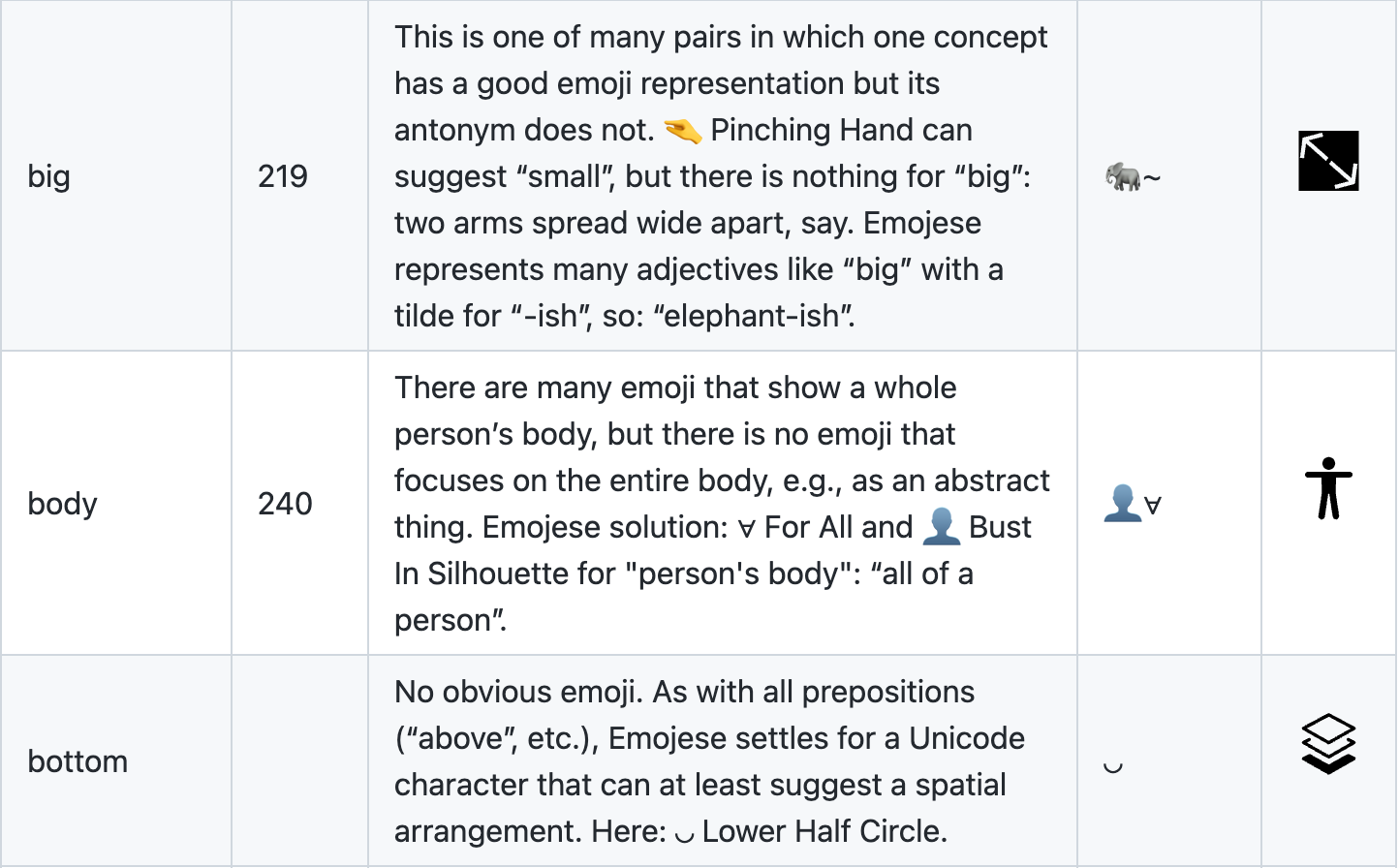Strategies for picking emoji for words that don't have emoji
Creating a written language from emoji is challenging. Any constructed visual language faces the problem of identifying vocabulary. This problem is even harder with the Unicode emoji set, which is skewed to faces, hearts, animals, occupations, foods, flags, and cultural totems. There are many common words without obvious emoji representations.

To compensate for this, the Emojese emoji language resorts to a number of strategies to identify emoji sequences that can represent something new.

A particularly productive strategy is to designate certain emoji or glyphs to communicate abstract ideas and incorporate these into larger glyphs to contribute those abstract meanings. Chinese and Japanese kanji have characters called “radicals” that express such core meanings. For an emoji language, we can pick specific emoji and Unicode glyphs to fill the same role as radicals in emoji sequences:

The goal is to produce sequences which, while perhaps not obvious on first reading, are good enough and consistent enough to be remembered. Using this and other strategies, Emojese now has 1000+ common words, which is large enough to be general purpose and to communicate some complex ideas.